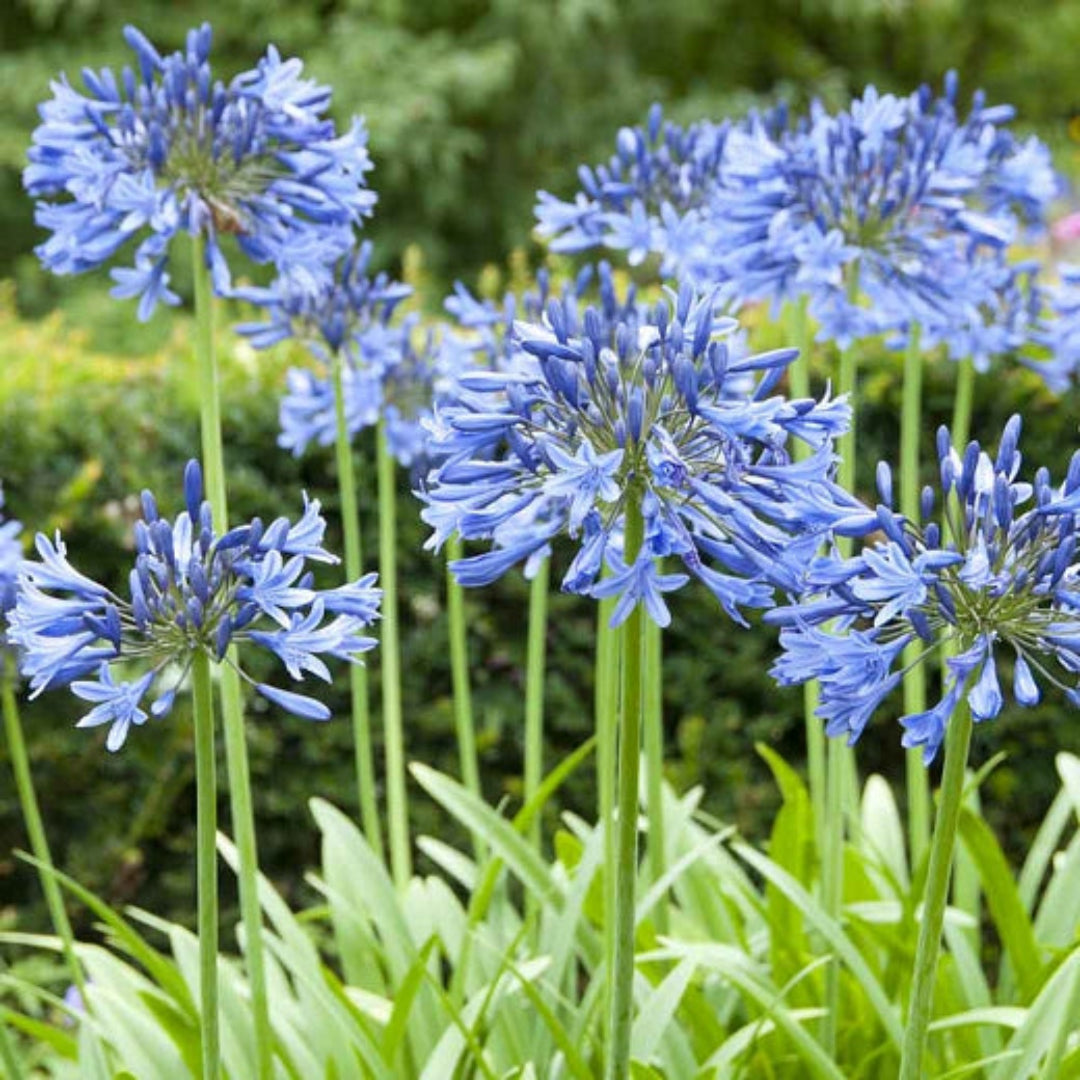Mastering the Art of Agapanthus Treatment: Important Actions for Healthy And Balanced Development and Vivid Flowers
In the world of horticulture, the cultivation of agapanthus stands as a satisfying endeavor for those that seek to nurture these elegant flowering plants. With their striking blossoms and elegant foliage, agapanthus has caught the focus of gardeners worldwide. Nevertheless, accomplishing optimum growth and vibrant blossoms calls for a nuanced strategy that encompasses various essential actions. From picking the ideal selection to mastering pruning strategies, the journey towards cultivating growing agapanthus plants is multifaceted and holds the key to unlocking the complete capacity of these botanical treasures.

Picking the Right Agapanthus Range

When choosing the right Agapanthus range for your garden, think about variables such as environment suitability, bloom color, and growth practice. Agapanthus, frequently called Lily of the Nile or African lily, can be found in a selection of colors varying from tones of purple and blue to white. Select a bloom color that complements your existing garden combination to develop an unified landscape. Furthermore, consider the environment in your area to make certain the Agapanthus variety you select can grow in your certain problems. Some ranges are much more forgiving of cold temperature levels, while others favor warmer environments. Comprehending the development behavior of different Agapanthus varieties is crucial for proper positioning within your yard. Some ranges have a clumping growth behavior, ideal for containers or borders, while others have a more spreading nature, appropriate for ground cover or mass growings. By carefully reviewing these factors, you can select the ideal Agapanthus range to enhance the elegance of your yard.
Ideal Planting Conditions
Thinking about the optimum ecological needs is crucial for effective Agapanthus growing. Agapanthus thrives in well-draining dirt with a somewhat acidic to neutral pH degree. When planting, select a location that gets complete sunlight to partial shade. In hotter environments, providing some afternoon color can protect against scorching of the fallen leaves. Agapanthus plants are sensitive to chilly temperature levels and need to be secured from frost during cold weather.
To make certain healthy growth and vibrant blooms, plant Agapanthus bulbs at a deepness of regarding 2-4 inches and room them 8-12 inches apart. Adding raw material, such as garden compost, to the dirt can improve drainage and fertility, advertising durable origin growth. Mulching around the base of the plants aids preserve dampness and subdues weed development. Routine watering is important, especially throughout the growing period, to maintain the moved here soil constantly damp but not waterlogged.
Watering and Feeding Tips
Keeping proper wetness degrees and offering necessary nutrients are essential components in the care regimen for Agapanthus plants. When it comes to sprinkling Agapanthus, it is crucial to strike an equilibrium. These plants prefer regularly damp dirt however are prone to root rot if overwatered.
Feeding Agapanthus is essential for advertising healthy development and respected blossoms. Use a balanced fertilizer, such as a 10-10-10 formula, in the early spring as new development arises. By adhering to these watering and feeding pointers, you can guarantee your Agapanthus plants flourish and generate dynamic, resilient flowers.
Trimming Techniques for Agapanthus
Pruning Agapanthus plants at the appropriate times and with correct methods is critical for keeping their health and advertising ideal growth and flowering. The ideal time to trim Agapanthus is in late wintertime or early springtime before new development arises.
For flowered stems, wait up until the blooms have actually perished and after that trim them back to the base. This not just cleans the plant's look however also encourages the advancement of new blossom buds. Deadheading invested blossoms can also redirect the plant's energy right into generating even more blossoms as opposed to use this link setting seeds. Nevertheless, if you wish to gather seeds for proliferation, leave some blossoms to dry and mature on the plant.
Remember to use clean, sharp devices to make exact cuts and lower the risk of presenting diseases. Agapanthus. Normal pruning will assist keep your Agapanthus looking cool and healthy while making sure an abundant display screen of stunning blossoms
Handling Usual Pests and Conditions
After ensuring appropriate pruning methods for Agapanthus, it is vital to deal with common bugs and illness that can impact the wellness and vigor of these plants. One usual bug that impacts Agapanthus is the Agapanthus gall midge.
Another typical issue is fungal fallen leave place, which provides as dark lesions on the leaves. To protect against fungal conditions, make certain excellent air circulation around the plants, avoid overhead watering, and remove any contaminated fallen leaves promptly. In addition, Agapanthus plants can deal with root rot if they are planted in poorly draining pipes soil. To prevent this, plant Agapanthus in well-draining dirt and prevent overwatering. By being attentive and taking timely action versus pests and diseases, you can help your Agapanthus plants grow and produce dynamic blooms.

Final Thought
To conclude, understanding the art of agapanthus care involves picking the best range, offering suitable growing conditions, correct watering and feeding, proper trimming methods, and dealing with common insects and diseases. By following these crucial actions, you can make certain healthy and balanced development and lively blossoms for your agapanthus plants. Bear in mind to routinely check and maintain your plants to advertise their total wellness and durability.
To make certain healthy development and dynamic blossoms, plant Agapanthus light bulbs at a deepness of about 2-4 inches and area them 8-12 inches apart. By following these watering and fertilizing suggestions, you can guarantee your Agapanthus plants flourish and create dynamic, lasting blooms.
One common pest that wikipedia reference impacts Agapanthus is the Agapanthus gall midge. Additionally, Agapanthus plants can experience from origin rot if they are grown in improperly draining dirt. By following these essential actions, you can make sure healthy development and vibrant blooms for your agapanthus plants.
Comments on “Agapanthus Propagation: Tips for Expanding Your Plant Collection”